


Table of Contents
Publishes 23 March 2020 – Article by William Van Zyl.
Copyright © William Van Zyl
Pleasant childhood memory can provide us with pleasant thoughts. It is as sweet as honey. Our eyes light up when we tell these stories, and it elicits more and more delightful stories in the minds of those who are listening in — they just can’t wait to share their childhood memories. It is so exciting. We are created for the narrative – sharing personal stories – it satisfies our soul.
I have some childhood memories to share – I have sketched it for you. I have summarised it in a title of only six words. A six-word-memory. As you read this article, I hope you are prompted to think about some of your childhood memories.
In this article, I have also included some things you could do to remember — and enjoy — your childhood memories.
Here is the first of my memories.
Barber’s square-cut gets girls attention’ (six words).
UNCLE JAN (JOHN) THE BARBER (OOM JAN DIE BARBIER)

Oom Jan (‘Uncle John’) the Barber. Uncle Jan was a chubby caucasian man who had been cutting men’s hair for decades – he would perform a cut by talking away the 15 to 20 minutes. He was a devout Christian, and he always had some tracts in his barbershop. His tracts were short stories, and messages of the Gospel of Jesus Christ was woven into the fabric of these stories. He would also ‘burn’ men’s hair with a flame – just the tips – why he did that I don’t know. Thank goodness, he always extinguished it only in time! However, it was quite popular back then in the 1960 and 1970s. Tools used for this sketch: Black ink (Lamy) – fountain pen (ultra-fine nib), Faber-Castell watercolour pencils and Schmincke watercolours. Credit: W van Zyl
More about the Barber story:
The round shape of ‘oom Jan’ dressed in his white barber’s jacket (white long sleeve jacket with a double row of black buttons on the front) sharpening his ‘skeerlem’ (vintage straight razor blade) on the long strop is vividly etched in my childhood brain. The strop – made from leather – always hanged from the side of his barber’s chair. The strop – which looked like a man’s belt – was treated with a special wax so the strop could be used to sharpen the straight razor by swiping the blade back and forth on the strop (flipping it over with every second swipe). The razor was used for the final finishing of the haircut around the ears and the neck. See the YouTube video on how to sharpen a straight razor. The straight razor would scrape against one’s neck and around the ears as the conclusion of the session. Oom Jan would then take a broad brush and dip it into some talcum powder. A fine, good smelling cloud, would fill the air and mix with the sunlight that enters through the windows. The floating powder would accentuate and punctuate the dappled sunlight coming from the window. When you smelled the talcum powder, it was a hint that he was going to take the cape of your shoulders and shake the loose hair into a large bin in his manly barberry. Then – next – it was time for dad to get out his wallet. Dad always paid for his three sons, Deon, Martin and William’s haircuts in cash.
Oom Jan die Barbier
Oom Jan – die barbier – se baadjie is wit met knope van swart been,
Sy haarsny gereedskap is skerp, blink en gereed,
Die stempel van gehalte pruik trots op elke element.
Oom Jan se fingers weet hoe om hare te sny.
Die hare spat terwyl oom Jan vertel van die kruis – die Hout-kruis,
Sy vingers werk vanself as hy oor die Groot Swart boek praat.
Die hele barbier-saal luister – van hulle knik hul koppe instemmend,
“Oom Jan kan ek n ‘square-cut’ kry asseblief?” “Charlie wat se jy? Kan jou seuns n ‘square cut’ kry?”
“Ja wat hulle verdien n nuwe haarstyl. Ek dink the ‘girls’ sal baie daarvan hou.”
“Dankie, dankie! Baie dankie Dad! Uiteindelik – n square-cut.”
Oom Jan lag wanneer hy die groot doek van my skouers afhaal – dan skud hy die hare uit. Dit sproei in a reenboog van fyn naalde in die laat middag son.
Hy hou die klein spiëel agter my. Van die groot spiëel voor my sien ek dit…sowaar, n ‘square-cut!’
‘Dad Charles’ gooi sy kop agteroor soos hy lag,
Ons drie seuns se oë vonkel: “Ons het a ‘square-cut’ gekry!”
Ons wonder onmiddelik, wat gaan die ‘girls’ sê?
Will, Maart en Deon gaan hul ‘bell-bottom’ langbroeke – en hulle nuwe E A Relling hemde – en hoë platform skoene kerk toe dra die Sondag!
Deur W Van Zyl.
Uncle Jan the Barber
Uncle Jan’s barber’s jacket is pure white with two rows of elegant black bony buttons
His equipment is sharp, shiny and ready to raze,
The stamp of quality glimmer and shimmer proudly on every tool.
Uncle Jan’s fingers know how to cut hair.
A rainbow of fine hair rains everywhere while Uncle Jan tells passionately of the cross – the Wood Cross,
His trained fingers work on its own while he talks about the Big Black Book.
The whole barber hall listens – some are nodding their heads in agreement,
“Uncle Jan, can I get a square cut, please? Charlie, what are you saying? Can your boys get a square cut?”
“Yes, they deserve a new hairstyle. I think the ‘girls’ will love it. “
“Thank you, thank you! Thank you so much Dad! Finally, we are going to get a square-cut.
Uncle Jan shook the loose hair out of the big cape as he removes it from my shoulders. It rains shine needles in the late afternoon sun.
He holds the mirror behind me. The back of my head reflects in the big mirror in front of me.
I can see it. It is very straight … a real ‘square-cut!’
Dad Charles throws his head back as he laughs,
Our three boys’ eyes sparkle: “We got a ‘square-cut’!”
We wonder what the ‘girls’ are going to say.
William, Martin and Deon will wear their bell-bottom pants – and E A Relling new shirts – as well as their high platform shoes to church this Sunday!
By William Van Zyl

See the full process of sharpening a razor in this video. Using the strop for the final preparation is at the end of the video – wait for it. A straight razor can last for generations. Compare the razor blade period with the razor blades we use today. Think about all the plastic wrapping and packaging of the disposable razor blades that we buy today. Now compare that to a vintage razor blade packaged in a cardboard box with no plastic at all. Outstanding quality straight razors are available for sale today. The contrast illustrates how plastic has increased in our world today. It is shocking. Link to video: ‘How to sharpen a straight razor’ – https://youtu.be/l7ynJqeYK_g

‘Sweeney Todd shaving set.’ Great set which consists of a straight razor, genuine bristle shaving brush and strop (‘strap’) for sale at dhgate.com. So manly! It sells for about US $ 65 to $ 75. https://www.dhgate.com/product/wholesale-men-39-s-quot-sweeney-todd-quot/268447951.html Credit: dhgate.com.

This picture shows the old metal man shaver and shaving brush of my grandad Pieter Grabe (Peter) Van Zyl. My dad Charles passed away in 2018. His grandad’s shaving equipment is now my precious memorabilia. I am using the shaving brush every morning in my shaving routine. Part of the watercolour sketch of the barbershop memory is at the bottom of the picture. Credit: W van Zyl (March 2020).

Authentic and original: Close up of the disposable metal hand shaver (‘handskeermes’) and shaving brush of grandad P G Van Zyl. Probably about 80 to 100 years old. There is no blade in the shaver – can you recall the blade brand ‘Minora?’ There is a saying: “So skerp soos soos n Minora blade,” – ‘as sharp as a Minora blade.’ See the Palmolive tube of shaving lather (black coloured tube) – recently purchased in New Zealand. Credit: W Van Zyl (March 2020).
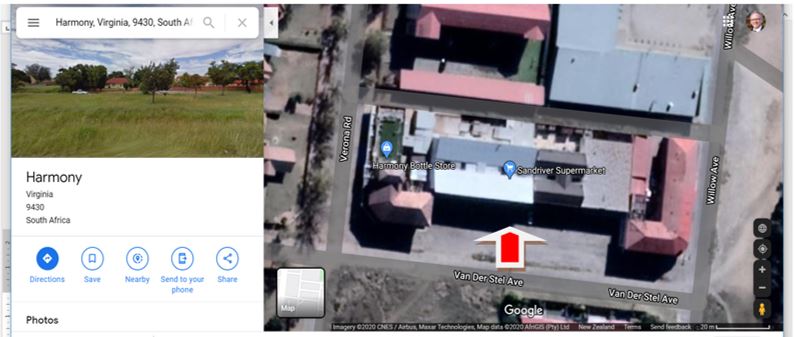
Location of ‘Oom Jan se Haarkapper Winkel’ (Uncle Jan’s Barbershop). Here is the top view of the shopping centre in Harmony, Virginia, Freestate (Republic of South Africa). Virginia was home to the Harmony Gold Mining Company – a small gold mine town. The barbershop was located in the building shown with the red arrow. Credit: Google Maps.

Ink and watercolour
sketch. Schmincke watercolours (half pans) at the top. Credit: W van Zyl – March
2020.
The question is, ‘how can we remember the past – specifically those great childhood memories?’
Here are a couple of things you could do:
1. Find the right cues
You need the right cues (about four keywords) to recall a particular incident. A great way to refresh them is by talking to your friends and family members (people a few years older than you). Read/learn new things if in some way they fire the same neurons that connect to those memories — like this article. Listen to music; movies can also get your brain in that same mind-set—triggering memories.
2. Look at old photos and concentrate on unique odours
Old photos are very helpful. Odours characteristic of a place, or a person, is a powerful tool to remember the past. It could be apricot jam being made, a woman’s perfume, hickory smoke, aftershave, a cake, a tart, or a stable. Quiet reverie in the evening when you are tired from a hard day’s work, sitting in a comfortable chair, can open up a channel to lost or blocked memories, it is like a deep state of reflection.
3. Make notes when watching movies, reading a book or paging through a magazine.
“Forgotten” memories are often brought to the surface when we experience or remember something that is related to the event. By reading books, watching movies paging through magazines, viewing videos, reading and viewing images on the internet are also a great source to stimulate childhood memories. HINT: A great idea is to carry a notebook – or make notes on your mobile phone – keep these journal entries with your photos. When a memory is elicited, have your notebook ready. Make notes, sketches and diagrams. Write up your emotions; make notes on what you ‘see.’
4. Delve deeper – do not resist repressed events and thoughts
Look inward and listen to yourself. Don’t resist the thoughts and images that come to your mind – each one is a clue. The resistance to specific thoughts – especially those memories that are not so pleasant – is a survival mechanism. It protects us from negative experiences. Some of you have been through some tough things; most of us had been. We have learned from it. It makes us resilient. Mostly. Ensure you are in a positive state of mind when you regress to these thoughts. Remember, you have overcome it. Be brave and strong; carefully visiting those events will assist you to uncover some childhood memories that are positively related to those not so positive revealed thoughts. See it as part of life – the negative happens to us all. It is how you respond to those events that are important. Be brave. It all depends on how you look at it. View it as lessons learned – keep it upbeat. By facing, some of those not so positive thoughts and memories will make you stronger. In the process, more details will be uncovered; from those thoughts – make associations – link it to other events. Memories will be triggered.
5. Talk to elderly family members, parents and caregivers – make notes
By listening to the stories of family members and those closest to your – discussing the past and telling stories – can uncover and stimulate childhood memories. Mostly, those who have rich, layered stories told to them about the past can make more connections, and consequently remember more of their childhood. After discussions, take time to reflect – one memory at a time – make notes, make sketches, draw a diagram, a timeline. Why not consider using watercolours – or other art mediums – to make in-depth notes?

Read the words at the bottom of the sketch. “Exchange a ‘Poenskop’ (no 1 cut- short and spiky) for a square-cut.” It means cutting hair with a no 1-cut comb fitted to the electric clippers. See the hairstyle chart below for details.
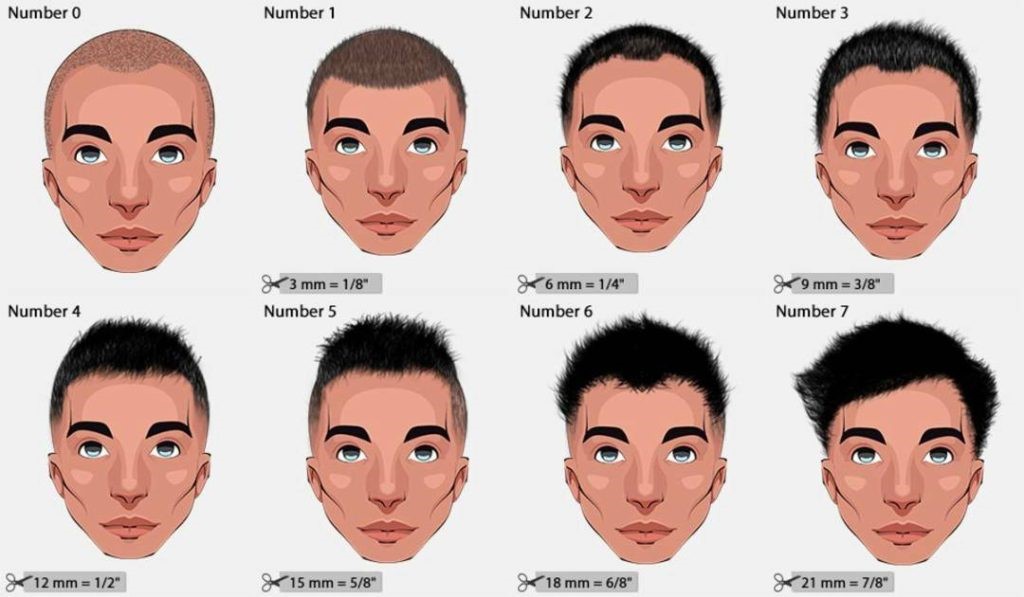
The different hairs
styles form the ATOZ (A to Z Hairstyles website). These
are, in a way, related to the length of the hair. What they actually are is the
fraction of hair that is to be left on the scalp by the barber. Credit: https://atozhairstyles.com/articles/haircut-numbers-guide-to-hair-clipper-sizes/

Essential barber hand tools used for cutting men’s hair. Vintage scissors, electric clippers, straight razor, comb, and shaving brush.

The barber chair:
Chrome tubing framework, brown or black leather upholstery. Adjustable chair
(up and down) with a headrest and footrest. I remember the long strop (strip of
leather for sharpening the straight razor) hanging from the barber chair. Uncle
Jan used it occasionally to swipe the straight razor up and down just before he
shaved the hair around our ears and in the neck.
‘Innocent radiogram sounds across neighbour’s fence’ (six words).
“Halo, halo, can you hear me?”
“Yes, I can hear you faintly…please repeat your last words?”
“It is working; it is working!”
“I can hear you, I can hear you. The speaker system is working!”
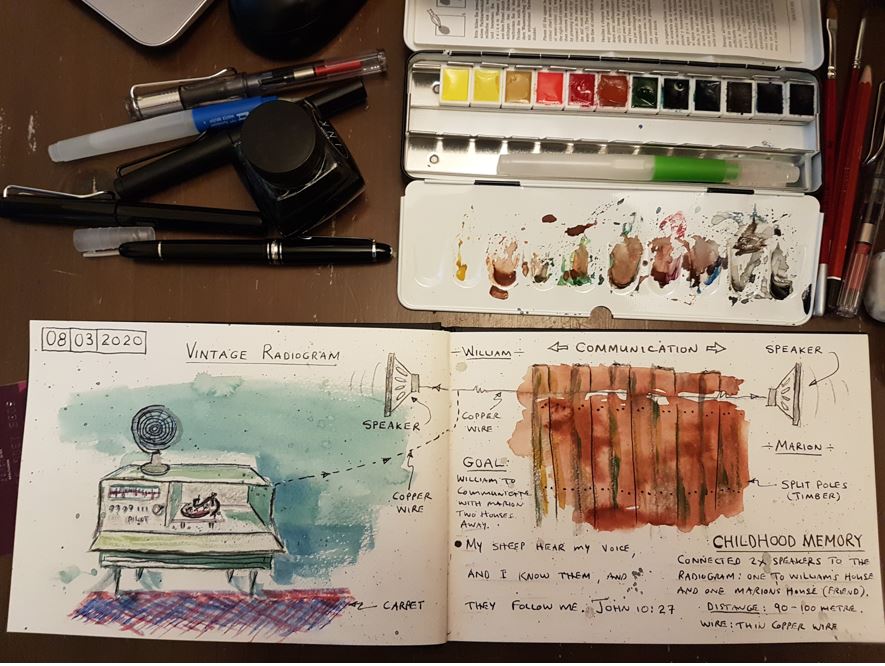
The sketch shows the ‘innocent’ vintage radiogram (1960 t0 1970’s) on the left. An old electric fan sits on the radiogram. The radiogram was in our bedroom at home. On the right is the split pole fence – two thin copper cables ran across the top of the fence to connect the speakers with the radiogram. It became an instant walkie-talkie. The distance between the speakers was about 90 to 100 metres.
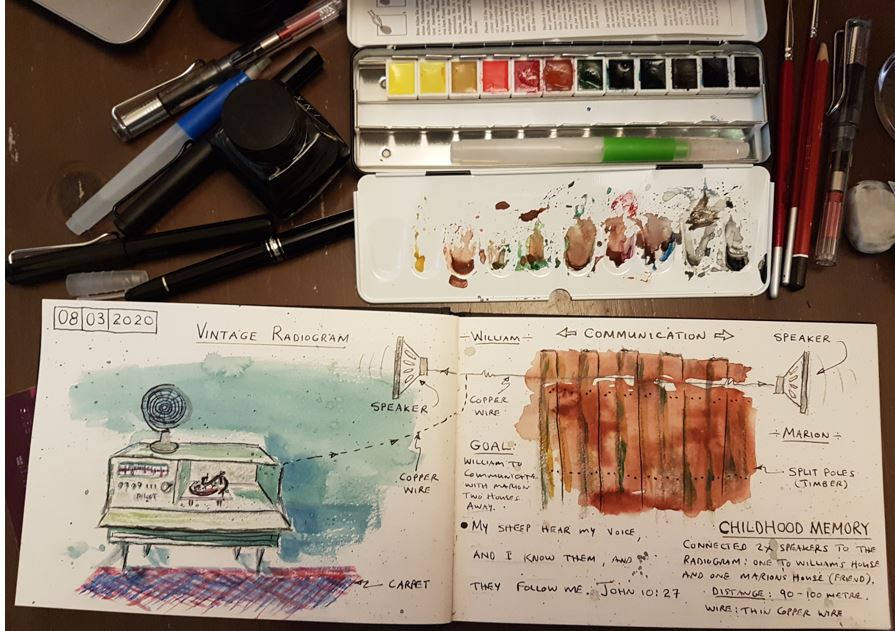
Watercolours, fountain
pens, soft pencil (6B) and a ‘Tombow’ water brush (reservoir with water in the
handle) at the top left and right.
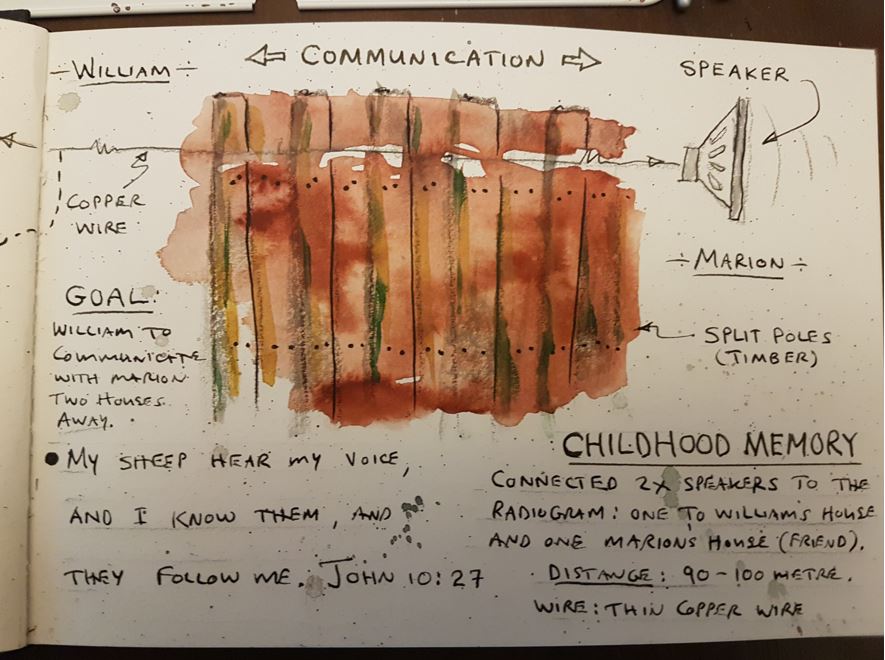
The fence details: Height of the fence = 1. 8 to 2 metre. Treated timber fixed with galvanised nails.
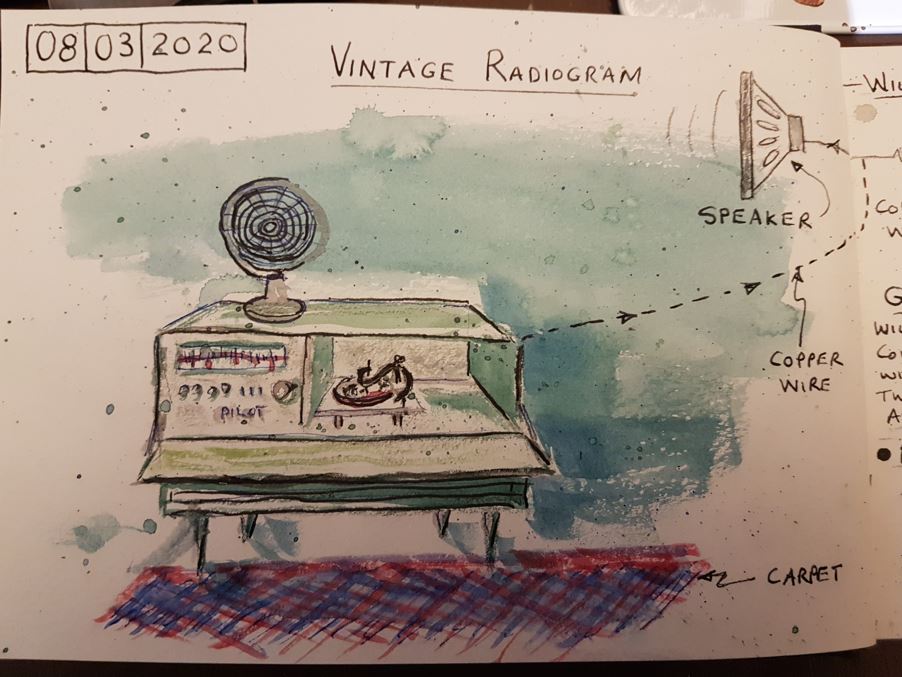
Pilot radiogram. Radio
on the left and the turntable on the right in the unit.
Large glass Radio Valves
I remember the old valves (glass cylindrical shaped electrical components of the radio) that used to warm up in the radiogram.

Radio valves (vintage
radio): The valve called a vacuum tube, an electron tube,
or valve (British usage) or, colloquially, a tube (North America), is
a device that controls electric current flow in a high vacuum between
electrodes to which an electric potential difference has been applied.
Here is a video that shows some of these valves – a repair video.

Scalextric lured me; wagging punished me! (Six-words)
More about the slot car story:
At the tender age of 15, I wagged school for a day and went to my friend’s house for the day. We played with his new slot car set all day long. As you can imagine, we enjoyed every minute racing! Later that afternoon – about 3 pm – I returned home and pretended that I had a great day at school. The bus used to stop right in front of our house to pick us up and drop us off. A large hedge, to the front of our house, screened the bus from our home. Very convenient. My nana – ouma Bella – lived with us at that stage and she received me warmly as always. Everything seemed fine until dad returned from work late that afternoon.
My friend and I were in my bedroom when dad walked into the room. We knew something was up. Dad asked if we were at school that day. We answered, “Yes dad, of course, we have been at school.” He then said that ouma Bella had received a phone call from the school earlier that morning. The teacher said that we were not at school. It was game over. We immediately admitted our wrongdoing. Dad lifted the bottom of his jersey – he had two belts around his waist. He removed one. You can imagine what happened next. Lesson learned. My friend and I remember that hiding to this day.
Dad realised that he gave my friend a hiding without his nana’s consent. My friend lived just around the corner from us with his granny. Dad told the story: he went over to the nana – she was so impressed with my dad’s actions; she thanked dad several times for doing the right thing. The friend became a minister after leaving school. He reported that the hiding he received that day had been woven strategically into many of his sermons. The unique story supported powerful messages delivered by him to his congregation! He reported that many people responded to his altar calls after telling the story of the new Scalextric.

My favourite slot car – the Mini Minor. I loved the green olive coloured Mini Scalextric car. My first choice to this day. This is my rendition of the little car.

Mini Minor slot car on the track.

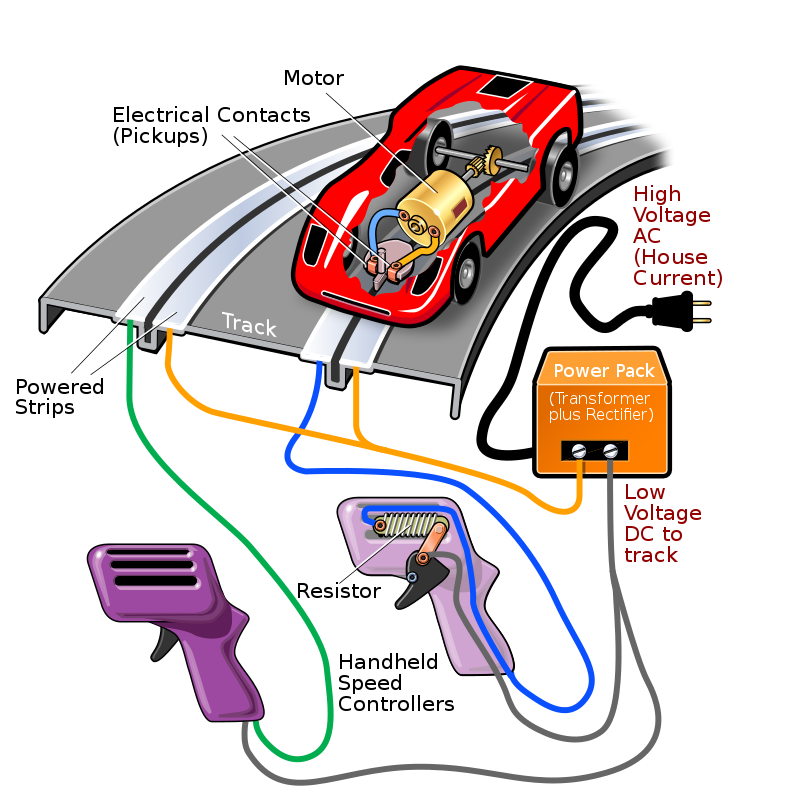
Electrical diagram Scalextric (slot car set). Credit: By D.Helber at the English language Wikipedia, CC BY-SA 3.0, https://commons.wikimedia.org/w/index.php?curid=5674559

On the left: A typical electric diagram: it shows how slot car sets are connected. On the right the Mini Minor. Fountain pens – used for the sketches – at the bottom far right.

Close up of the electrical diagram. The transformer (including the rectifier) converts the 230 volts (AC current) to a lower voltage of about 12 volts DC (vintage sets) at 1 Amp for two cars. A safe voltage and current for kids to use.

Sketching tools: Far-right, bottom – Faber-Castell watercolour pencils. Watercolour pencils are very convenient and easy to use. It is used as typical colouring pencils – then add water with a fine arts paintbrush – and voila, the watercolours produce the magic of flowing colours. One can also use watercolour pencils to sketch with, just like colouring pencils. No need to add water.
Here I have included some of my very basic sketching tools from my sketchbook.

Lamy fountain pen
(Safari Vista). Ultra-fine nib. Black ink. Quality Schmincke watercolours
(Germany). I use the essential half pan set with 12 primary colours for my
sketching and painting. See the sketch for details.
More about the author:
E-books and articles
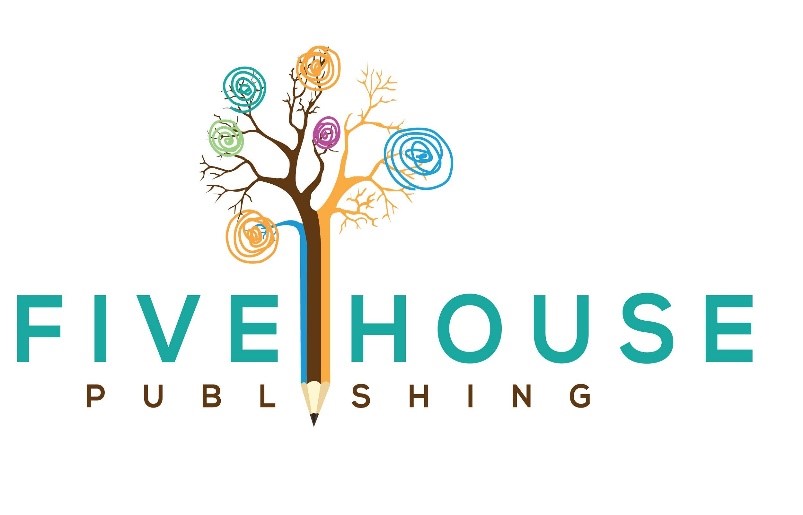
Read online – blog posts: https://fivehousepublishing.com/
About the author: http://williamvanzyl.com/